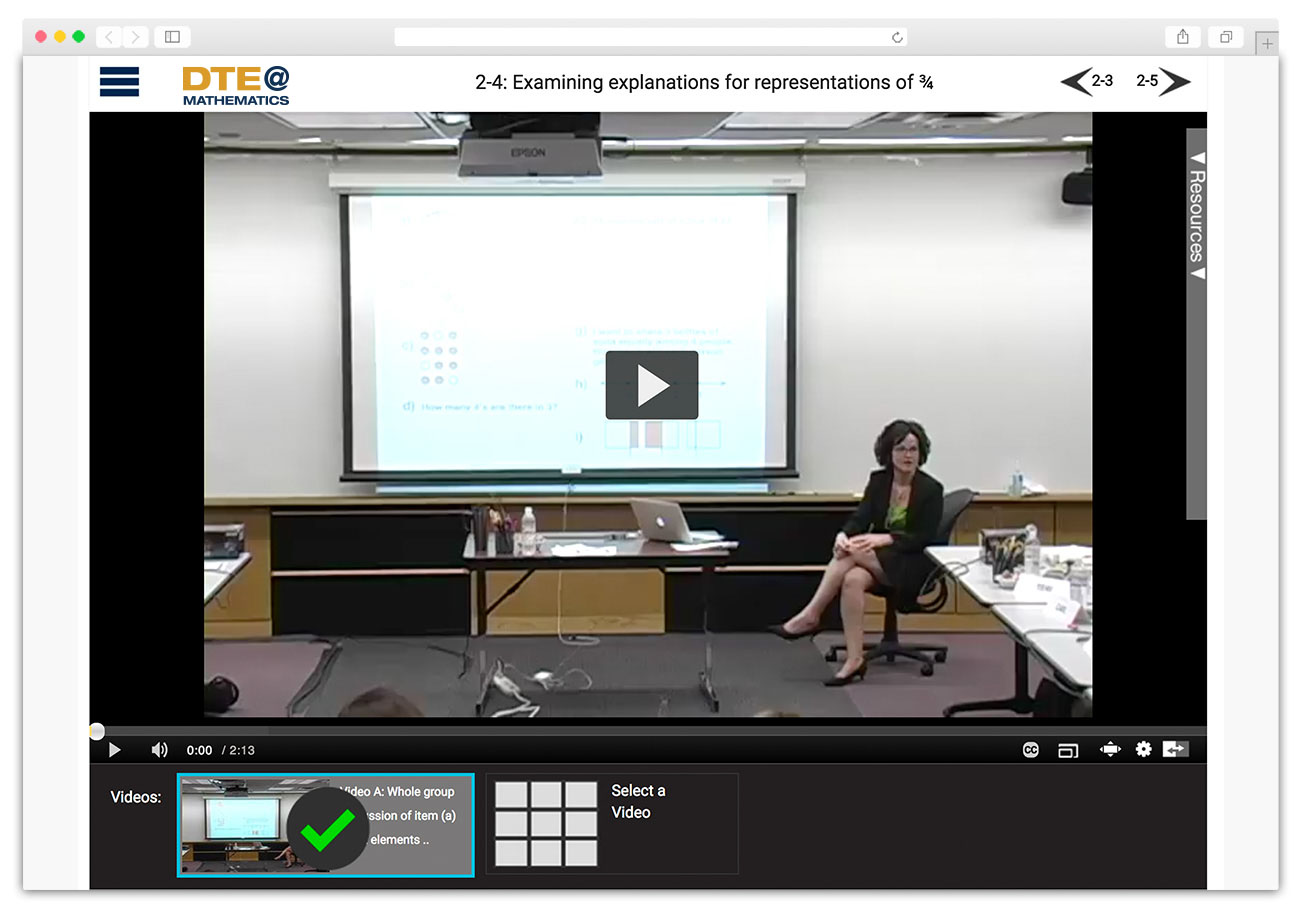Fractions - Session 2: Understanding and using representations of fractions
Part 4: Examining explanations for representations of ¾
Overview
This part continues the work on the representations of ¾ activity. It compares different explanations and examines how key ideas about fractions are used in these explanations.
Key Points
- Two foundational ideas about fractions: identifying the whole and equal partitioning.
- The meaning of “equal partitioning” depends on the type of representation. For example, in an area model equal partitioning means that each partition has equal area, but in a set model equal partitioning means there are the same number of objects in each partition.
